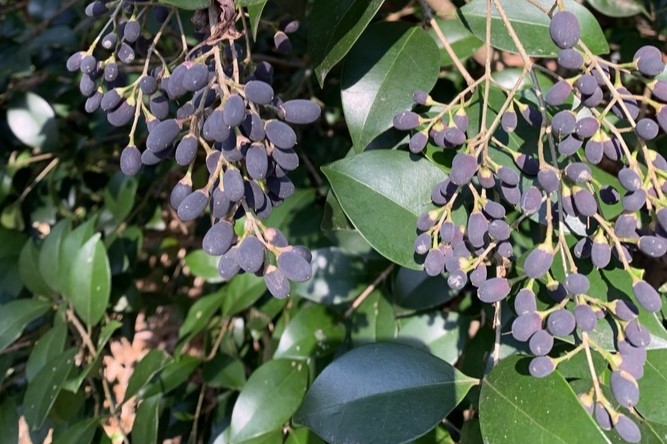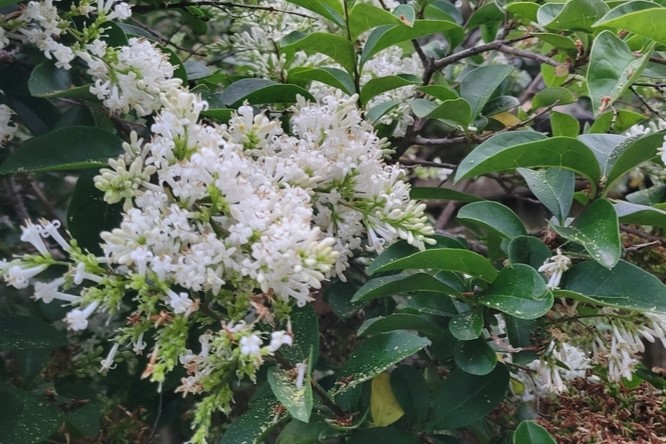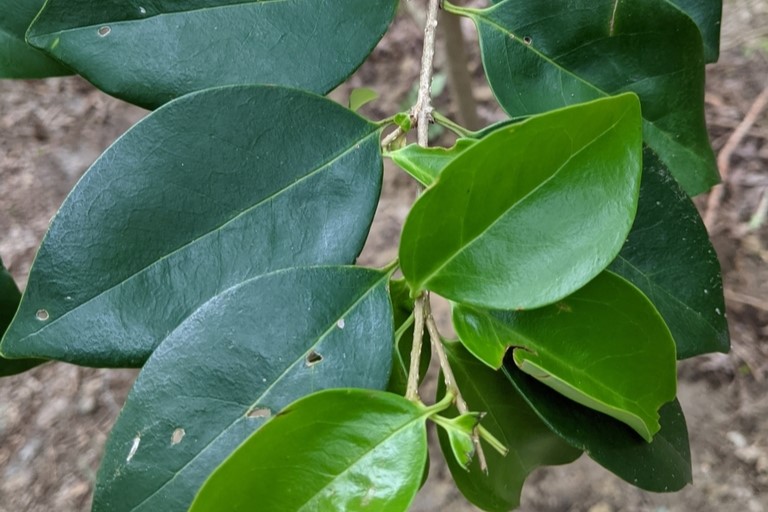Japanse liguster

An evergreen small tree typically grown for its dense, glossy foliage and fragrant white flowers. Widely used as a hedge or screening plant in gardens, it grows quickly and produces abundant black berries eaten by birds.
Declared invasive weed, NEMBA Category 3
It is recognized as a highly invasive species in South Africa. It forms dense thickets that aggressively outcompete native vegetation, leading to the decline of indigenous shrubs and groundcover.
Rapid Spread: The berries are eaten and spread by birds. The berries have a mild laxative effect. Birds typically roost in trees in cool areas such as riparian zones (trees along rivers), grasslands, and disturbed urban sites spreading the seeds in areas far from cultivated areas.
Many of the river systems throughout the country are becoming dominated by berry producing invasive trees such at this privet, which has already disrupted the ecosystems irreversibly. No matter where you live, these trees should be removed, or at a minimum pruned annually before they seed.
Biodiversity Threat: Its dominance reduces local biodiversity, alters habitat structure, and disrupts native plant and animal communities. Native plants are often shaded out, and the replacement of indigenous berry-producers can negatively affect wildlife diets.
Difficult to Control: Persistent root systems and prolific seeding make removal challenging, necessitating repeated mechanical and chemical control efforts.
Legal Status: Ligustrum japonicum is listed as an invasive alien species in South Africa, restricting its cultivation, sale, and transport due to its significant ecological impact.


One of the most problematic alien invasive plants, causing significant threats to biodiversity.
The white, scented flowers are visited by a range of pollinators, mainly bees and butterflies.
The trees are prolific seeders, producing large, dense bunches of spherical, black berries.
Birds eat and spread the seeds.
The seeds are spread by birds, with high germination rates.
The trees should be removed. If not possible, all flowers should be pruned to avoid seeds setting or ripening.
The stumps are very difficult to remove.
When removing trees, stumps should be poisoned immediately after being cut.
Stumps and remaining roots resprout, so rootstock needs to be removed every 6 weeks until all evidence of growth has been removed.
(It is far easier to stop the trees seeding than removing the trees).
No traditional uses known in Africa.
